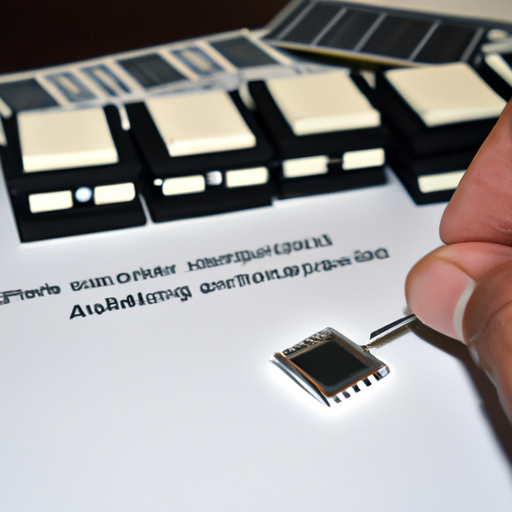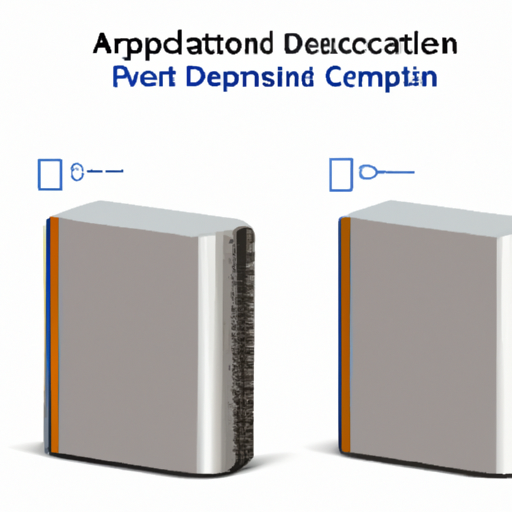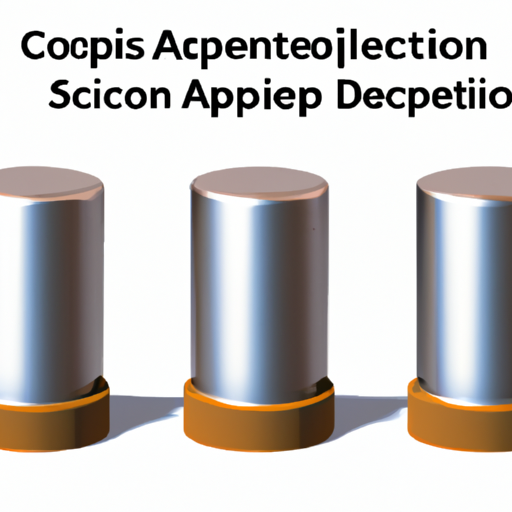
Application Development in Film Capacitors for CFR-50JB-52-1M1: Key Technologies and Success StoriesFilm capacitors, such as the CFR-50JB-52-1M1, are integral components in a wide range of electronic applications due to their superior electrical properties, stability, and reliability. Below, we explore key technologies that have advanced the development of these capacitors, along with notable success stories that illustrate their impact across various industries.
Key Technologies1. Material Innovations2. Dielectric Layer Design3. Manufacturing Techniques4. Thermal Management5. Simulation and Modeling1. Renewable Energy Systems2. Electric Vehicles (EVs)3. Consumer Electronics4. Industrial Automation5. Telecommunications Success Stories ConclusionThe application development of film capacitors like the CFR-50JB-52-1M1 is propelled by advancements in materials, manufacturing techniques, and design innovations. Their success across diverse industries—including renewable energy, automotive, consumer electronics, industrial automation, and telecommunications—underscores their versatility and significance in modern technology. As the demand for more efficient and reliable electronic components continues to rise, film capacitors will remain pivotal in shaping the future of electronic design and application.
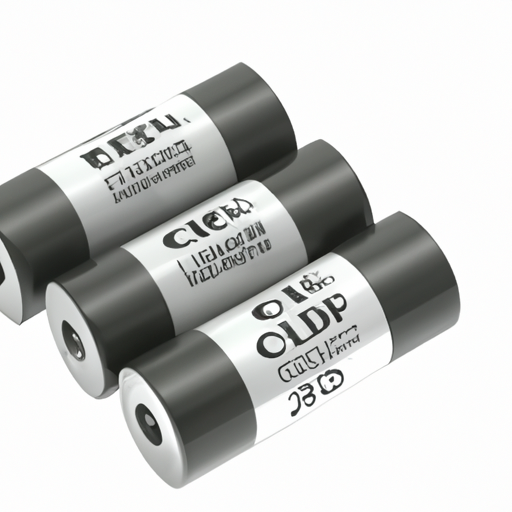
Electric Double Layer Capacitors (EDLCs) OverviewElectric Double Layer Capacitors (EDLCs), commonly referred to as supercapacitors, are advanced energy storage devices that combine the characteristics of traditional capacitors and batteries. They are known for their ability to store significant amounts of energy and deliver it rapidly, making them ideal for a wide range of applications. Below, we delve into the core functional technologies that underpin EDLCs and explore various application development cases that highlight their effectiveness.
Core Functional Technology of EDLCs1. Electrochemical Double Layer Formation2. High Surface Area Electrodes3. Electrolyte Composition4. Hybrid Systems5. Advanced Manufacturing Techniques1. Electric Vehicles (EVs)2. Renewable Energy Systems3. Consumer Electronics4. Industrial Applications5. Smart Grids6. Wearable Technology Application Development Cases ConclusionElectric Double Layer Capacitors (EDLCs) represent a significant advancement in energy storage technology, offering unique advantages such as high power density, long cycle life, and rapid charge/discharge capabilities. Their versatility allows for applications across various industries, from automotive to consumer electronics, and they are increasingly being integrated into hybrid systems to enhance overall performance. As research and development continue, the potential for EDLCs to contribute to sustainable energy solutions and innovative technologies remains vast, paving the way for a more energy-efficient future.
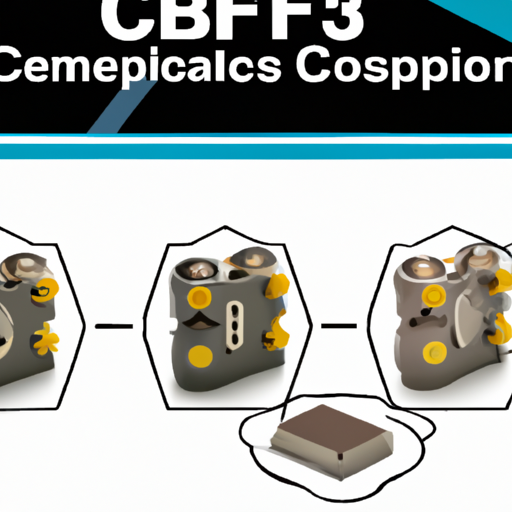
Application Development in Ceramic Capacitors for CFR-50JB-52-1K1: Key Technologies and Success StoriesCeramic capacitors, such as the CFR-50JB-52-1K1, are integral components in modern electronics, known for their reliability, stability, and performance. The development and application of these capacitors involve several key technologies and methodologies that enhance their functionality across various industries. Below are insights into these technologies and notable success stories.
Key Technologies1. Material Science Innovations2. Manufacturing Techniques3. Simulation and Modeling4. Quality Control and Testing5. Integration with Other Components1. Consumer Electronics2. Automotive Applications3. Telecommunications4. Medical Devices5. Industrial Applications Success Stories ConclusionThe application development of ceramic capacitors like the CFR-50JB-52-1K1 is propelled by advancements in materials, manufacturing technologies, and integration techniques. The success stories across various industries underscore the versatility and reliability of ceramic capacitors, making them essential components in modern electronic devices. As technology continues to evolve, the role of ceramic capacitors is expected to expand, leading to further innovations and applications that will shape the future of electronics.
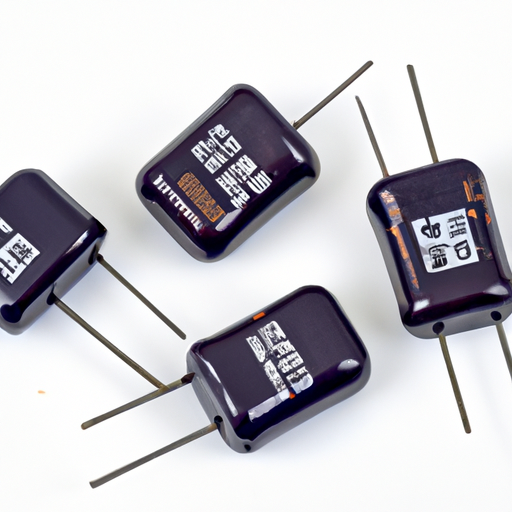
Tantalum Capacitors: Core Functional Technology and Application DevelopmentTantalum capacitors are integral components in modern electronics, known for their high capacitance per volume, stability, and reliability. While the MM74HC4020N is a binary counter IC that does not directly utilize tantalum capacitors, understanding the role of these capacitors in circuits that may incorporate such ICs is essential for effective design and application. Below, we explore key articles and application cases that highlight the effective use of tantalum capacitors.
Core Functional Technology Articles1. Understanding Tantalum Capacitors: Basics and Benefits2. Tantalum Capacitors in Power Supply Applications3. Reliability and Failure Mechanisms of Tantalum Capacitors4. Tantalum Capacitors in RF and High-Frequency Applications5. Emerging Trends in Tantalum Capacitor Technology1. Smartphone Power Management2. Automotive Electronics3. Medical Devices4. Telecommunications Infrastructure5. Consumer Electronics Application Development Cases ConclusionTantalum capacitors are essential components in various electronic applications, offering benefits such as high capacitance, reliability, and stability. Understanding their technology and application cases can aid engineers and designers in making informed decisions when integrating these components into their designs, including those involving ICs like the MM74HC4020N. As technology continues to advance, the role of tantalum capacitors is expected to expand, solidifying their position as a critical element in future electronic innovations.
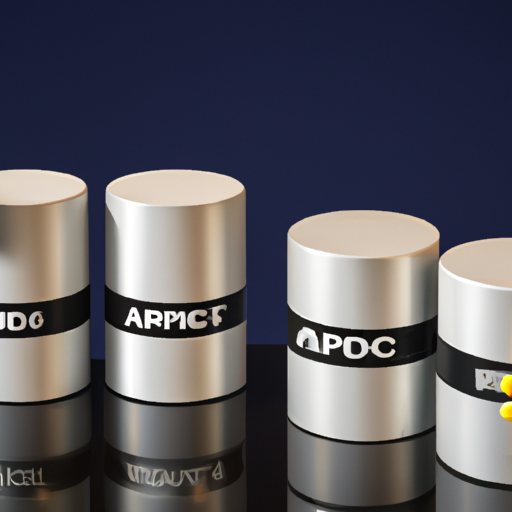
Application Development in Aluminum Electrolytic Capacitors for CFR-50JB-52-1R1: Key Technologies and Success StoriesAluminum electrolytic capacitors, such as the CFR-50JB-52-1R1, are integral components in a multitude of electronic applications due to their high capacitance values, cost-effectiveness, and versatility. The development and application of these capacitors are driven by several key technologies and methodologies that enhance their performance, reliability, and applicability across various industries. Below, we explore these key technologies and highlight notable success stories.
Key Technologies1. Electrolyte Formulation2. Anodization Techniques3. Foil Technology4. Construction and Packaging Innovations5. Simulation and Modeling6. Quality Control and Testing1. Consumer Electronics2. Automotive Applications3. Renewable Energy Systems4. Industrial Automation5. Telecommunications Success Stories ConclusionThe development of aluminum electrolytic capacitors like the CFR-50JB-52-1R1 is characterized by a combination of advanced materials, innovative manufacturing processes, and stringent testing protocols. As technology continues to evolve, these capacitors will play an increasingly vital role in a diverse array of applications, from consumer electronics to renewable energy systems. The success stories across various industries underscore the versatility and reliability of aluminum electrolytic capacitors, solidifying their status as essential components in modern electronic design.
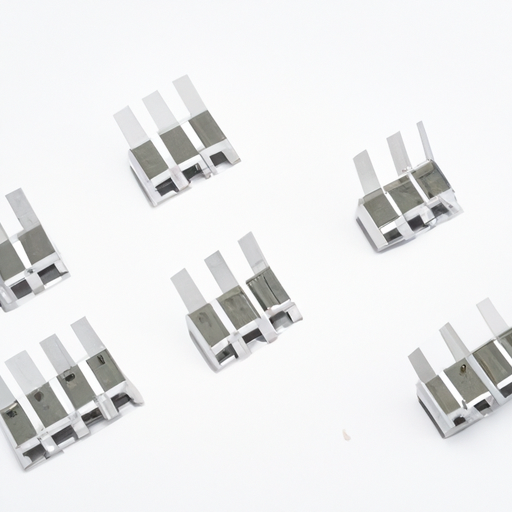
Overview of Chassis Mount Resistors: CFR-25JB-52-1MChassis mount resistors, such as the CFR-25JB-52-1M, are integral components in electronic circuits, providing essential resistance in a compact and robust form factor. Their design and functionality cater to a wide array of applications, making them indispensable in modern electronics. Below, we delve into the core functional technologies and application development cases that underscore the effectiveness of chassis mount resistors.
Core Functional Technologies1. High Power Handling2. Thermal Management3. Precision and Stability4. Durability and Reliability5. Versatile Mounting Options1. Power Supply Circuits2. Motor Control Systems3. Audio Equipment4. Industrial Automation5. Telecommunications6. Automotive Applications Application Development Cases ConclusionChassis mount resistors like the CFR-25JB-52-1M are fundamental components in a variety of electronic applications due to their high power handling, effective thermal management, precision, and durability. Their versatility allows for effective integration into power supplies, motor control systems, audio equipment, industrial automation, telecommunications, and automotive applications. As technology continues to advance, the demand for reliable and efficient chassis mount resistors will grow, solidifying their role as a cornerstone in modern electronic design.
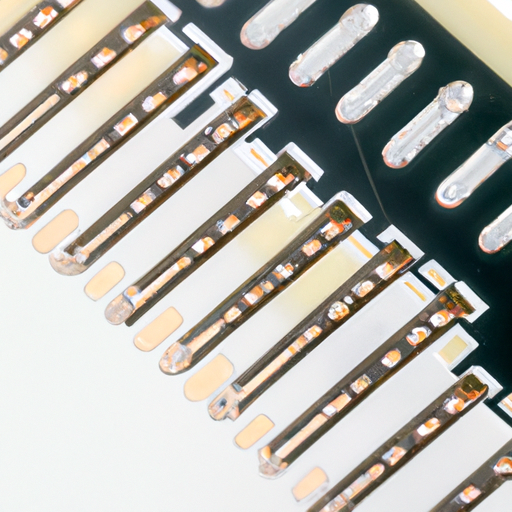
Application Development in Through-Hole Resistors for CFR-50JB-52-1M: Key Technologies and Success StoriesThrough-hole resistors, such as the CFR-50JB-52-1M, are integral components in a wide range of electronic applications due to their reliability, stability, and ease of handling during assembly. Below, we explore key technologies that enhance their performance and some notable success stories that highlight their application across various industries.
Key Technologies1. Material Science2. Manufacturing Techniques3. Thermal Management4. Testing and Quality Control5. Simulation and Modeling1. Consumer Electronics2. Industrial Applications3. Automotive Electronics4. Medical Devices5. Telecommunications Success Stories ConclusionThrough-hole resistors like the CFR-50JB-52-1M are vital components in various electronic applications, thanks to their reliability, ease of handling, and performance characteristics. Advancements in material science, manufacturing techniques, and testing methods have further enhanced their applicability across diverse industries, from consumer electronics to medical devices. As technology continues to evolve, the role of through-hole resistors will remain significant in ensuring the performance and reliability of electronic systems, paving the way for innovative applications in the future.
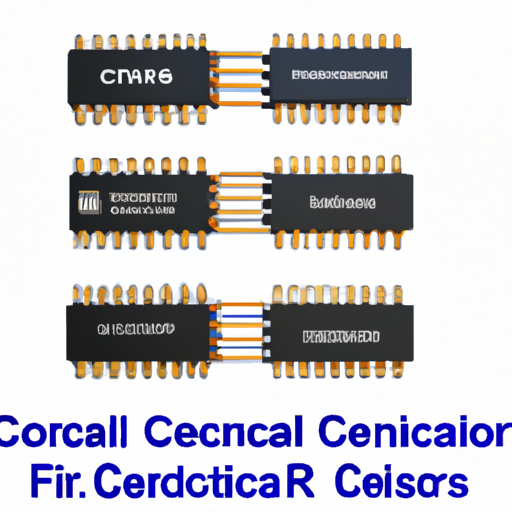
Overview of Integrated Circuits (ICs) and the CFR-50JB-52-1KThe CFR-50JB-52-1K is a specific type of integrated circuit (IC) that may not be widely recognized in general literature, but it represents a category of ICs that are essential in various applications. Below, we will explore the core functional technologies of integrated circuits, their applications, and specific development cases that highlight their effectiveness.
Core Functional Technologies of Integrated Circuits (ICs)1. Digital Logic Circuits2. Analog Circuits3. Mixed-Signal Circuits4. Power Management ICs (PMICs)5. Radio-Frequency Integrated Circuits (RFICs)1. Consumer Electronics2. Automotive Industry3. Healthcare Devices4. Industrial Automation5. Internet of Things (IoT) Application Development Cases ConclusionIntegrated circuits are foundational to modern electronics, enabling a wide range of applications across various industries. The continuous advancement in IC technology, including miniaturization, increased functionality, and improved power efficiency, drives innovation and enhances the effectiveness of electronic systems. As new applications emerge, the role of ICs, including specific types like the CFR-50JB-52-1K, will only become more critical in shaping the future of technology. The ongoing development in ICs will continue to support advancements in consumer electronics, automotive safety, healthcare, industrial automation, and the Internet of Things, making them indispensable in our increasingly connected world.
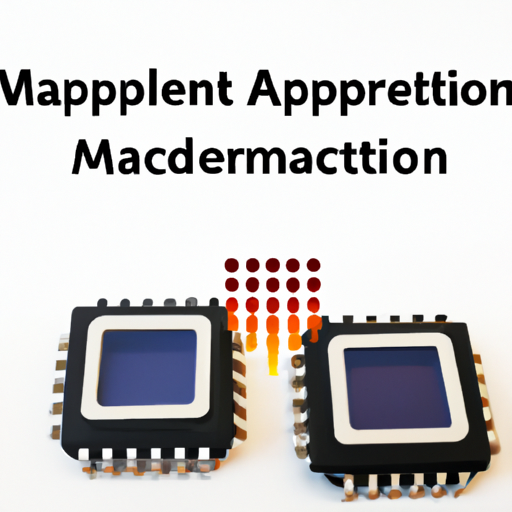
Application Development in Sensors and Transducers for MM74HC4050N: Key Technologies and Success StoriesThe MM74HC4050N is a hex buffer/driver that utilizes high-speed CMOS technology, making it an essential component in various applications involving sensors and transducers. Its primary functions include signal buffering and level shifting, which are critical for interfacing different voltage levels in electronic systems. Below, we explore key technologies and notable success stories that highlight the application development of the MM74HC4050N in sensor and transducer systems.
Key Technologies1. Signal Conditioning2. Level Shifting3. Noise Immunity4. High Input Impedance5. Multiple Channels1. Industrial Automation2. Consumer Electronics3. Automotive Applications4. IoT Devices5. Medical Devices Success Stories ConclusionThe MM74HC4050N is a versatile and essential component in the development of applications involving sensors and transducers. Its capabilities in buffering, level shifting, and signal conditioning make it a vital part of numerous successful projects across diverse industries, including industrial automation, consumer electronics, automotive, IoT, and medical devices. As technology continues to advance, the MM74HC4050N is poised to remain a valuable tool for engineers and developers working with sensor-based systems, driving innovation and enhancing performance in various applications.
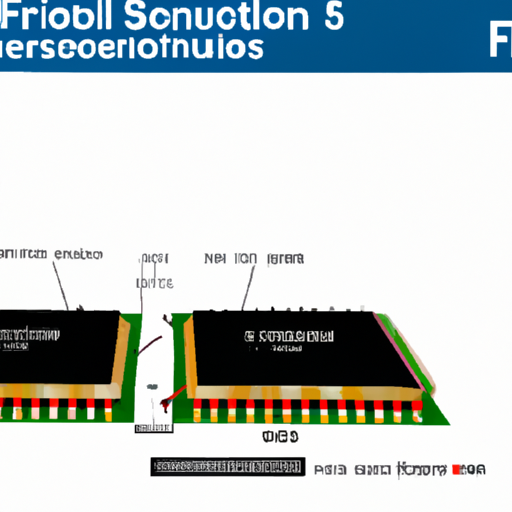
Overview of CFR-50JB-52-1R Discrete Semiconductor ProductsThe CFR-50JB-52-1R is a specific model of discrete semiconductor products, typically categorized under power electronics. Discrete semiconductors are fundamental components in electronic circuits, providing essential functions such as switching, amplification, and rectification. Below, we delve into the core functional technologies associated with discrete semiconductors and explore various application development cases that highlight their effectiveness.
Core Functional Technologies of Discrete Semiconductor Products1. Diodes2. Transistors3. Thyristors4. Power Modules5. Packaging Technologies1. Power Supply Design2. Motor Control3. LED Drivers4. Renewable Energy Systems5. Consumer Electronics6. Telecommunications Application Development Cases ConclusionDiscrete semiconductor products, including the CFR-50JB-52-1R, are essential in modern electronic systems, enabling a wide array of applications from power management to signal processing. Understanding the core technologies and their applications allows engineers and developers to design more efficient and effective electronic systems. For specific articles and case studies, it is advisable to consult technical journals, manufacturer white papers, and industry publications that focus on semiconductor technology and applications. This knowledge can guide the development of innovative solutions in various fields, including automotive, telecommunications, and renewable energy.

Application Development in Crystals, Oscillators, and Resonators for ECS-F1HE155K: Key Technologies and Success StoriesThe ECS-F1HE155K crystal oscillator is a pivotal component in a wide array of electronic applications, providing stable frequency references essential for timing and synchronization in circuits. Below is a detailed overview of the key technologies, application development, and notable success stories associated with the ECS-F1HE155K.
Key Technologies1. Crystal Technology2. Frequency Stability3. Low Power Consumption4. Miniaturization5. Integration with Other Technologies1. Consumer Electronics2. Telecommunications3. Automotive Applications4. Industrial Automation5. Medical Devices1. Smartphone Development2. Wearable Technology3. Automotive Innovations4. Telecom Infrastructure Application Development Success Stories ConclusionThe ECS-F1HE155K crystal oscillator exemplifies advancements in crystal technology, offering reliable performance across diverse applications. Its integration into consumer electronics, telecommunications, automotive, industrial, and medical devices highlights its versatility and significance in modern electronic design. As technology continues to evolve, the demand for high-performance, low-power oscillators will only increase, driving further innovations in this field. The ECS-F1HE155K stands as a testament to the critical role of crystal oscillators in enabling the functionality and efficiency of contemporary electronic systems.
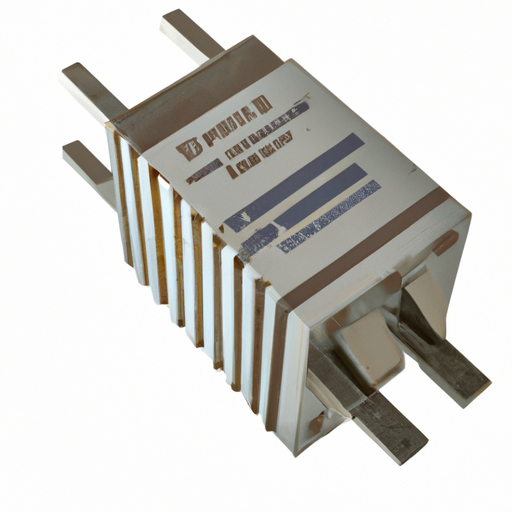
ECS-F1HE335K Transformers: Core Functional Technologies and ApplicationsThe ECS-F1HE335K Transformers, like other transformer models, leverage the groundbreaking transformer architecture that has transformed natural language processing (NLP) and various other fields. Below, we delve into the core functional technologies, key articles, and application development cases that underscore the effectiveness of transformers.
Core Functional Technologies1. Self-Attention Mechanism2. Multi-Head Attention3. Positional Encoding4. Layer Normalization5. Feed-Forward Neural Networks1. "Attention is All You Need" (Vaswani et al., 2017)2. "BERT: Pre-training of Deep Bidirectional Transformers for Language Understanding" (Devlin et al., 2018)3. "GPT-3: Language Models are Few-Shot Learners" (Brown et al., 2020)4. "Transformers for Image Recognition at Scale" (Dosovitskiy et al., 2020)1. Natural Language Processing2. Machine Translation3. Text Summarization4. Image Processing5. Healthcare6. Code Generation Key Articles Application Development Cases ConclusionThe ECS-F1HE335K Transformers and their underlying technology have demonstrated remarkable effectiveness across various domains. The integration of self-attention, multi-head attention, and other innovations has facilitated significant advancements in NLP, computer vision, and beyond. As research progresses, we can anticipate even more applications and enhancements in transformer-based models, further solidifying their role in the future of artificial intelligence.
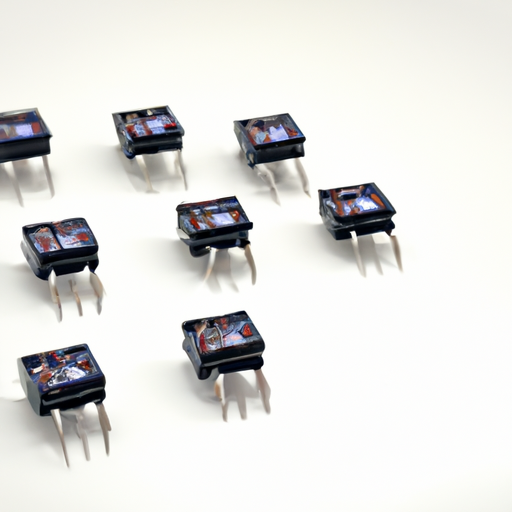
ECS-F1CE225K Inductors, Coils, Chokes: Core Functional Technologies and Application Development CasesInductors, coils, and chokes are fundamental components in electronic circuits, serving critical roles in energy storage, filtering, and signal processing. The ECS-F1CE225K is a specific inductor model that exemplifies these functionalities across various applications. Below, we delve into the core functional technologies and notable application development cases that highlight the effectiveness of inductors, coils, and chokes.
Core Functional Technologies1. Energy Storage2. Filtering3. Choke Applications4. Transformers5. Magnetic Core Materials1. Power Supply Design2. RF Applications3. Audio Equipment4. Motor Control5. Telecommunications6. LED Drivers Application Development Cases ConclusionInductors, coils, and chokes, such as the ECS-F1CE225K, are indispensable components in modern electronic applications. Their capabilities in energy storage, signal filtering, and current management make them essential in diverse fields, including power supply design, telecommunications, audio equipment, and more. By understanding their core functional technologies and exploring various application development cases, engineers can effectively leverage these components to create efficient and reliable electronic systems. The ECS-F1CE225K serves as a prime example of how inductors can be optimized for specific applications, driving innovation and performance in electronic design.
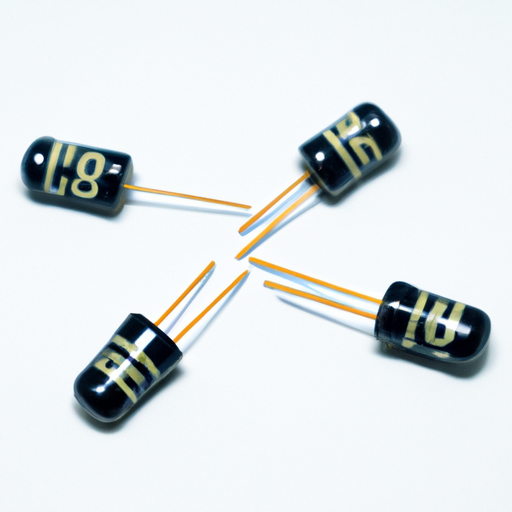
Overview of S6008L Resistors and Their Applications
The S6008L resistors are a specific type of resistor that can be utilized in various electronic applications. While detailed articles or case studies specifically on the S6008L may not be readily available, we can explore the core functional technology of resistors in general and highlight effective application development cases that demonstrate their utility.
Core Functional Technology of Resistors
1. **Basic Functionality**:
- Resistors are passive components that limit the flow of electric current in a circuit. They are essential for controlling voltage and current levels, ensuring that electronic devices operate within safe parameters.
2. **Types of Resistors**:
- **Fixed Resistors**: These have a constant resistance value and are widely used in circuits for current limiting and voltage division.
- **Variable Resistors**: Such as potentiometers and rheostats, allow for adjustable resistance, making them useful in applications like volume controls and tuning circuits.
- **Specialty Resistors**: Include thermistors (temperature-sensitive), photoresistors (light-sensitive), and others that change resistance based on environmental factors.
3. **Material Composition**:
- Resistors can be made from materials like carbon, metal film, or wire-wound materials. The choice of material impacts performance characteristics such as stability, temperature coefficient, and noise.
4. **Power Rating**:
- Each resistor has a power rating that indicates the maximum power it can dissipate without overheating. This is crucial for ensuring reliability and longevity in circuit designs.
5. **Tolerance**:
- Tolerance indicates the precision of the resistor's value, which is vital for applications requiring high accuracy.
Application Development Cases
1. **Voltage Divider Circuits**:
- Resistors are often used in voltage divider configurations to create reference voltages. For instance, in sensor applications, the S6008L could be employed to scale down voltages to levels suitable for microcontroller inputs, ensuring accurate readings.
2. **Current Limiting in LED Circuits**:
- In LED applications, resistors are essential for limiting the current flowing through the LED, preventing damage and ensuring optimal brightness. The S6008L can be effectively used in these circuits to maintain consistent performance.
3. **Signal Conditioning in Audio Applications**:
- Resistors are integral to audio signal processing, where they work with capacitors to filter and condition signals. This is critical in high-fidelity audio equipment, where maintaining signal integrity is paramount.
4. **Pull-Up and Pull-Down Resistors in Digital Circuits**:
- In digital electronics, resistors are used to define input levels for logic gates. Pull-up resistors connect inputs to a high voltage, while pull-down resistors connect them to ground, preventing floating inputs and ensuring reliable operation.
5. **Temperature Sensing with Thermistors**:
- In applications involving temperature measurement, thermistors (a type of resistor) change their resistance with temperature variations. This functionality is crucial in HVAC systems and industrial processes for accurate temperature control.
6. **Feedback Networks in Operational Amplifiers**:
- Resistors are used in feedback networks of operational amplifiers to set gain and stability. This is essential in designing amplifiers for various applications, from audio processing to instrumentation.
Conclusion
Resistors, including specific types like the S6008L, are fundamental components in electronic circuit design. Their ability to control current and voltage makes them indispensable across a wide range of applications, from simple LED circuits to complex signal processing systems. Understanding their core functionalities and applications can lead to more effective and innovative designs in electronics.
For more specific articles or case studies, it is advisable to consult technical journals, manufacturer datasheets, or industry publications that focus on electronic components and their applications. These resources can provide deeper insights into the performance and use cases of the S6008L resistors in various electronic designs.
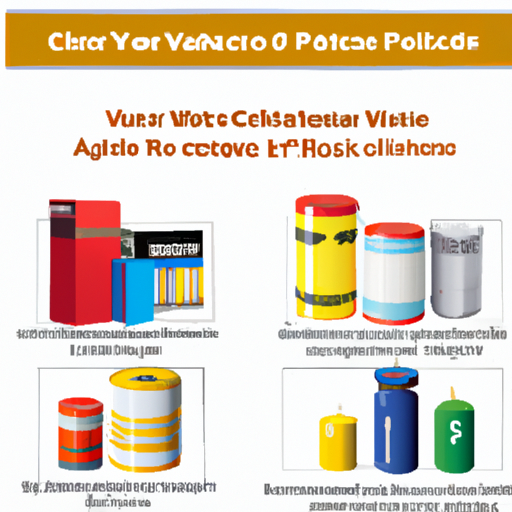
Important Product Categories of Capacitor Voltage
I. Introduction
Capacitors are fundamental components in electrical and electronic systems, serving various functions such as energy storage, filtering, and voltage regulation. Understanding capacitor voltage is crucial for selecting the right type of capacitor for specific applications. This article will explore the important product categories of capacitor voltage, their characteristics, applications, and the factors influencing their selection.
II. Understanding Capacitor Voltage
A. Explanation of Voltage Rating in Capacitors
The voltage rating of a capacitor is a critical specification that indicates the maximum voltage the capacitor can safely handle without risk of failure. Exceeding this voltage can lead to dielectric breakdown, resulting in catastrophic failure, which can damage the capacitor and surrounding components.
B. Types of Capacitor Voltage
Capacitor voltage can be categorized into three main types:
1. **AC Voltage**: This refers to the voltage applied to capacitors in alternating current (AC) circuits. Capacitors used in AC applications must be rated for the peak voltage of the AC waveform.
2. **DC Voltage**: Direct current (DC) voltage is constant and does not change direction. Capacitors in DC applications must be rated for the maximum DC voltage they will encounter.
3. **Ripple Voltage**: In power supply circuits, capacitors often experience ripple voltage, which is the AC component superimposed on the DC voltage. Capacitors must be rated to handle this ripple voltage to ensure reliable operation.
III. Major Product Categories of Capacitor Voltage
A. Ceramic Capacitors
Ceramic capacitors are widely used due to their small size, low cost, and excellent stability. They are available in various voltage ratings, typically ranging from a few volts to several kilovolts.
1. **Characteristics and Applications**: Ceramic capacitors are non-polarized and can be used in both AC and DC applications. They are commonly found in decoupling, filtering, and timing applications.
2. **Voltage Ratings and Their Importance**: The voltage rating of ceramic capacitors is crucial, especially in high-frequency applications where voltage spikes can occur. Selecting a capacitor with an appropriate voltage rating ensures reliability and longevity.
B. Electrolytic Capacitors
Electrolytic capacitors are polarized capacitors known for their high capacitance values and relatively low cost. They are primarily used in power supply circuits and audio applications.
1. **Characteristics and Applications**: These capacitors are typically used in applications requiring large capacitance values, such as smoothing and filtering in power supplies.
2. **Voltage Ratings and Their Importance**: Electrolytic capacitors have specific voltage ratings that must be adhered to, as exceeding these ratings can lead to leakage or even explosion. Proper selection is essential for safety and performance.
C. Film Capacitors
Film capacitors are made from thin plastic films and are known for their stability and reliability. They are used in various applications, including audio, RF, and power electronics.
1. **Characteristics and Applications**: Film capacitors are non-polarized and can handle high voltages, making them suitable for applications requiring precision and stability.
2. **Voltage Ratings and Their Importance**: The voltage rating of film capacitors is critical, especially in high-voltage applications. Choosing a capacitor with a suitable voltage rating ensures that it can withstand the operational conditions without failure.
D. Tantalum Capacitors
Tantalum capacitors are known for their high capacitance-to-volume ratio and stability. They are often used in compact electronic devices.
1. **Characteristics and Applications**: These capacitors are polarized and are commonly used in applications such as power supply filtering and decoupling in portable electronics.
2. **Voltage Ratings and Their Importance**: Tantalum capacitors have specific voltage ratings that must be observed to prevent failure. They are sensitive to over-voltage conditions, making proper selection crucial.
E. Supercapacitors
Supercapacitors, also known as ultracapacitors, are energy storage devices that bridge the gap between traditional capacitors and batteries. They offer high capacitance and rapid charge/discharge capabilities.
1. **Characteristics and Applications**: Supercapacitors are used in applications requiring quick bursts of energy, such as in regenerative braking systems and energy storage for renewable energy sources.
2. **Voltage Ratings and Their Importance**: The voltage rating of supercapacitors is essential, as exceeding this rating can lead to rapid degradation or failure. Proper voltage selection is vital for ensuring performance and safety.
IV. Specialized Capacitor Voltage Categories
A. High-Voltage Capacitors
High-voltage capacitors are designed to operate at voltages significantly above standard levels, often exceeding 1 kV.
1. **Definition and Applications**: These capacitors are used in power transmission, industrial equipment, and high-voltage power supplies.
2. **Importance in Power Systems**: High-voltage capacitors play a critical role in power systems, helping to stabilize voltage levels and improve power factor.
B. Low-Voltage Capacitors
Low-voltage capacitors are designed for applications with voltage ratings typically below 100V.
1. **Definition and Applications**: These capacitors are commonly found in consumer electronics, such as smartphones, televisions, and computers.
2. **Importance in Consumer Electronics**: Low-voltage capacitors are essential for filtering and decoupling in electronic circuits, ensuring stable operation and performance.
C. Pulse Capacitors
Pulse capacitors are designed to handle high-energy pulses and are used in applications such as laser systems and pulsed power applications.
1. **Definition and Applications**: These capacitors can withstand rapid voltage changes and are used in applications requiring high peak currents.
2. **Importance in High-Pulse Applications**: Selecting the right pulse capacitor is crucial for ensuring reliability and performance in high-energy applications.
V. Factors Influencing Capacitor Voltage Selection
A. Application Requirements
1. **Voltage Levels**: The maximum voltage the capacitor will encounter in its application is a primary consideration.
2. **Frequency of Operation**: The frequency at which the capacitor will operate can influence its performance and the choice of capacitor type.
B. Environmental Considerations
1. **Temperature and Humidity**: Capacitors must be selected based on the environmental conditions they will face, as temperature and humidity can affect their performance and lifespan.
2. **Mechanical Stress**: Capacitors in applications subject to vibration or mechanical stress must be chosen carefully to ensure reliability.
C. Safety Margins
1. **Derating Capacitors**: It is common practice to derate capacitors, selecting a voltage rating higher than the maximum expected voltage to ensure reliability.
2. **Standards and Regulations**: Compliance with industry standards and regulations is essential for ensuring safety and performance in capacitor selection.
VI. Conclusion
In summary, understanding the important product categories of capacitor voltage is essential for selecting the right capacitor for specific applications. Each type of capacitor has unique characteristics, voltage ratings, and applications that must be considered. As technology advances, the demand for capacitors with higher performance and reliability continues to grow, making it crucial for engineers and designers to stay informed about the latest trends in capacitor technology.
VII. References
1. Academic Journals
2. Industry Standards
3. Manufacturer Specifications
This comprehensive overview of capacitor voltage categories provides a foundation for understanding the critical role capacitors play in electrical systems and the importance of selecting the right type for specific applications.
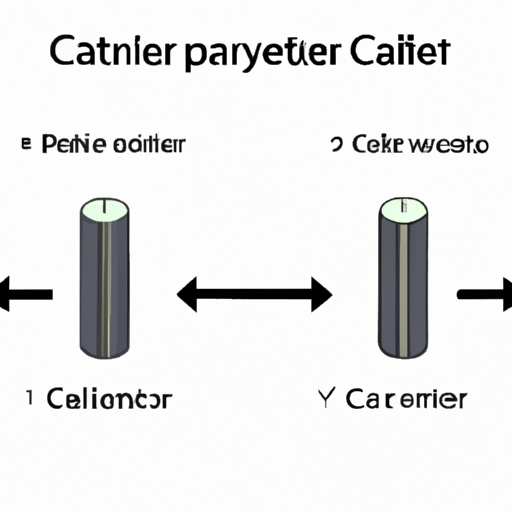
Understanding Parallel Capacitors
I. Introduction
Capacitors are fundamental components in electrical circuits, playing a crucial role in energy storage, filtering, and timing applications. They are essential for the proper functioning of various electronic devices, from simple circuits to complex systems. Among the different configurations of capacitors, parallel capacitors are particularly significant due to their unique properties and advantages. This article aims to provide a comprehensive understanding of parallel capacitors, their theoretical background, practical applications, and the challenges associated with their use.
II. Basic Concepts of Capacitors
A. What is a Capacitor?
A capacitor is an electronic component that stores electrical energy in an electric field. It consists of two conductive plates separated by an insulating material known as a dielectric. When a voltage is applied across the plates, an electric field is created, allowing the capacitor to store energy in the form of an electric charge.
1. Structure and Components
The basic structure of a capacitor includes two conductive plates, which can be made of materials like aluminum or tantalum, and a dielectric material that can be air, ceramic, plastic, or electrolytic. The choice of dielectric affects the capacitor's performance, including its capacitance, voltage rating, and temperature stability.
2. How Capacitors Store Energy
Capacitors store energy by accumulating electric charge on their plates. The amount of charge a capacitor can store is directly proportional to the voltage applied across its plates and the capacitance value, which is measured in farads (F). When the voltage is removed, the stored energy can be released back into the circuit.
B. Key Terms Related to Capacitors
Understanding capacitors requires familiarity with several key terms:
1. Capacitance
Capacitance is the measure of a capacitor's ability to store charge per unit voltage. It is defined as:
\[ C = \frac{Q}{V} \]
where \( C \) is the capacitance in farads, \( Q \) is the charge in coulombs, and \( V \) is the voltage in volts.
2. Voltage
Voltage is the electrical potential difference between two points in a circuit. It is the driving force that causes current to flow and is measured in volts (V).
3. Charge
Charge is a fundamental property of matter that causes it to experience a force when placed in an electromagnetic field. It is measured in coulombs (C).
III. Understanding Parallel Capacitors
A. Definition of Parallel Capacitors
Parallel capacitors are capacitors that are connected in such a way that their terminals are connected to the same two nodes in a circuit. This configuration allows each capacitor to experience the same voltage across its plates.
B. How Parallel Capacitors are Connected in a Circuit
In a parallel configuration, the positive terminals of all capacitors are connected together, and the negative terminals are also connected together. This setup ensures that each capacitor shares the same voltage, while the total charge stored in the circuit is the sum of the charges stored in each capacitor.
C. Visual Representation of Parallel Capacitor Configuration
A simple diagram can illustrate the parallel connection of capacitors:
```
+----||----+
| C1 |
| |
+----||----+
| C2 |
| |
+----||----+
| C3 |
| |
+-----------+
```
In this diagram, C1, C2, and C3 are connected in parallel, sharing the same voltage across their terminals.
IV. Theoretical Background
A. Capacitance in Parallel Circuits
1. Formula for Total Capacitance
The total capacitance (\( C_{total} \)) of capacitors connected in parallel is simply the sum of the individual capacitances:
\[ C_{total} = C_1 + C_2 + C_3 + ... + C_n \]
where \( C_1, C_2, C_3, \) and \( C_n \) are the capacitances of the individual capacitors.
2. Explanation of the Formula
This formula indicates that when capacitors are connected in parallel, the total capacitance increases. This is because each capacitor can store additional charge at the same voltage, effectively increasing the overall capacity of the circuit to store energy.
B. Comparison with Series Capacitors
1. Differences in Behavior and Calculations
In contrast to parallel capacitors, capacitors connected in series have a different behavior. The total capacitance in a series configuration is given by the formula:
\[ \frac{1}{C_{total}} = \frac{1}{C_1} + \frac{1}{C_2} + \frac{1}{C_3} + ... + \frac{1}{C_n} \]
This means that the total capacitance in a series circuit is always less than the smallest individual capacitor's capacitance.
2. Advantages and Disadvantages of Each Configuration
Parallel Capacitors:
Advantages: Increased total capacitance, same voltage across all capacitors, improved reliability.
Disadvantages: Requires more space, potential for uneven current distribution.
Series Capacitors:
Advantages: Smaller total capacitance, can handle higher voltage ratings.
Disadvantages: Reduced total capacitance, voltage drop across each capacitor can lead to failure if not properly rated.
V. Practical Applications of Parallel Capacitors
A. Use in Power Supply Circuits
Parallel capacitors are commonly used in power supply circuits to smooth out voltage fluctuations. By connecting multiple capacitors in parallel, the total capacitance increases, allowing for better energy storage and delivery during load changes.
B. Role in Filtering and Smoothing Signals
In audio and radio frequency circuits, parallel capacitors are used to filter out unwanted noise and smooth signals. They can help maintain a steady voltage level, improving the overall performance of the circuit.
C. Applications in Timing Circuits
Parallel capacitors are also utilized in timing circuits, where they work in conjunction with resistors to create time delays. The increased capacitance allows for longer timing intervals, which can be crucial in various applications.
D. Importance in Audio and Radio Frequency Circuits
In audio applications, parallel capacitors can enhance sound quality by reducing distortion and improving frequency response. In radio frequency circuits, they help in tuning and signal processing, ensuring optimal performance.
VI. Advantages of Using Parallel Capacitors
A. Increased Total Capacitance
One of the primary advantages of using parallel capacitors is the ability to achieve a higher total capacitance. This is particularly beneficial in applications requiring significant energy storage.
B. Improved Reliability and Performance
Parallel configurations can enhance the reliability of a circuit. If one capacitor fails, the others can continue to function, reducing the risk of total circuit failure.
C. Flexibility in Design and Component Selection
Using parallel capacitors allows designers to mix and match different capacitor types and values, providing flexibility in circuit design. This can lead to optimized performance tailored to specific applications.
VII. Challenges and Considerations
A. Potential Issues with Parallel Capacitors
1. Tolerance and Matching
When using multiple capacitors in parallel, it is essential to consider their tolerance and matching characteristics. Mismatched capacitors can lead to uneven current distribution, potentially causing overheating or failure.
2. Physical Size and Layout Considerations
Parallel capacitors can take up more space on a circuit board, which may be a concern in compact designs. Proper layout and spacing are crucial to ensure optimal performance and heat dissipation.
B. Impact of Temperature and Frequency on Performance
Capacitors can be affected by temperature and frequency variations. It is important to select capacitors rated for the specific conditions they will encounter in their application to ensure reliable performance.
VIII. Conclusion
Understanding parallel capacitors is essential for anyone involved in electronics, from hobbyists to professionals. Their ability to increase total capacitance, improve reliability, and provide design flexibility makes them invaluable in various applications. As technology continues to evolve, the role of capacitors in modern electronics will only become more significant. We encourage readers to explore further and deepen their understanding of capacitors and their applications in the ever-expanding world of electronics.
IX. References
For those interested in delving deeper into the topic of capacitors, the following resources are recommended:
- "The Art of Electronics" by Paul Horowitz and Winfield Hill
- "Capacitors: Technology and Applications" by John W. McCulloch
- Online resources such as educational websites and electronics forums that provide tutorials and discussions on capacitors and circuit design.
By understanding the principles and applications of parallel capacitors, you can enhance your knowledge and skills in electronics, paving the way for innovative designs and solutions.
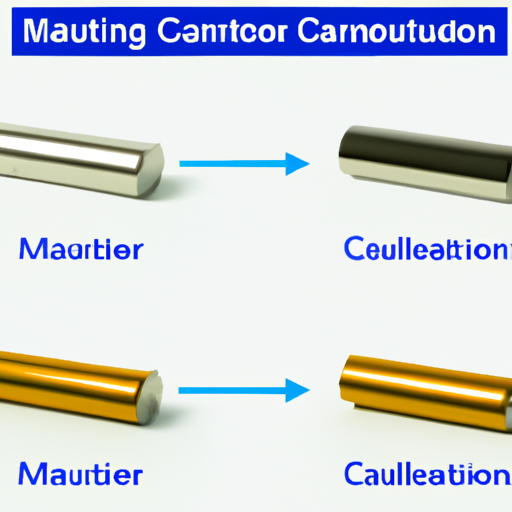
Latest Manufacturing Processes for Parallel Capacitors
I. Introduction
Parallel capacitors are essential components in electronic circuits, serving to store and release electrical energy. They play a crucial role in filtering, timing, and energy storage applications, making them indispensable in various devices, from smartphones to industrial machinery. As technology advances, the manufacturing processes for these capacitors have evolved significantly, leading to improved performance, efficiency, and sustainability. This article explores the latest manufacturing processes for parallel capacitors, highlighting key techniques, materials, and future trends.
II. Historical Context
The manufacturing of capacitors has undergone a remarkable transformation over the decades. Initially, capacitors were made using simple materials like paper and aluminum foil, which limited their performance and application. Traditional methods focused on bulk production, often sacrificing quality for quantity. However, with the advent of modern technology, manufacturers have adopted advanced techniques that enhance capacitor design and functionality.
The introduction of new materials and fabrication methods has allowed for the miniaturization of capacitors, enabling their integration into smaller electronic devices. This evolution has not only improved the performance of capacitors but has also expanded their applications across various industries.
III. Types of Parallel Capacitors
Parallel capacitors come in several types, each with unique characteristics and applications:
A. Ceramic Capacitors
Ceramic capacitors are widely used due to their stability and reliability. They are made from ceramic materials and are ideal for high-frequency applications.
B. Electrolytic Capacitors
Electrolytic capacitors are known for their high capacitance values and are commonly used in power supply circuits. They are polarized, meaning they must be connected in the correct direction.
C. Film Capacitors
Film capacitors utilize thin plastic films as dielectrics. They offer excellent stability and low losses, making them suitable for audio and high-frequency applications.
D. Tantalum Capacitors
Tantalum capacitors are known for their high capacitance in a small size. They are often used in applications where space is limited, such as in mobile devices.
E. Comparison of Different Types
Each type of capacitor has its advantages and disadvantages, making them suitable for specific applications. Understanding these differences is crucial for selecting the right capacitor for a given circuit.
IV. Key Manufacturing Processes
The manufacturing of parallel capacitors involves several key processes, each critical to ensuring the quality and performance of the final product.
A. Material Selection
The choice of materials is fundamental in capacitor manufacturing.
1. **Dielectric Materials**: The dielectric material determines the capacitor's performance characteristics. Common dielectrics include ceramic, polyester, and tantalum oxide, each offering different properties such as temperature stability and voltage ratings.
2. **Conductive Materials**: Conductive materials, such as aluminum and copper, are used for the electrodes. The choice of conductive material affects the capacitor's efficiency and overall performance.
B. Fabrication Techniques
The fabrication of capacitors involves various techniques:
1. **Thin-Film Deposition**: This technique involves depositing thin layers of dielectric and conductive materials onto a substrate. It allows for precise control over the thickness and uniformity of the layers, resulting in high-performance capacitors.
2. **Thick-Film Printing**: Thick-film printing is used to create capacitors with larger dimensions. This method involves printing conductive pastes onto a substrate, which are then fired to create solid layers.
3. **Coating and Laminating**: Coating involves applying a protective layer over the capacitor, while laminating involves stacking multiple layers of materials to create a multi-layer capacitor. Both processes enhance the durability and performance of the capacitors.
C. Assembly Processes
The assembly of capacitors is a critical step in the manufacturing process:
1. **Layer Stacking**: In multi-layer capacitors, layers of dielectric and conductive materials are stacked to achieve the desired capacitance. This process requires precision to ensure uniformity and performance.
2. **Soldering Techniques**: Soldering is used to connect the capacitor to the circuit board. Advanced soldering techniques, such as reflow soldering, ensure strong and reliable connections.
3. **Encapsulation Methods**: Encapsulation protects capacitors from environmental factors. Various methods, including potting and molding, are used to ensure the longevity and reliability of the capacitors.
V. Advanced Manufacturing Technologies
The integration of advanced technologies has revolutionized capacitor manufacturing, leading to increased efficiency and performance.
A. Automation and Robotics
Automation plays a significant role in enhancing production efficiency.
1. **Role of Automation in Production Efficiency**: Automated systems streamline the manufacturing process, reducing human error and increasing output.
2. **Robotics in Assembly and Quality Control**: Robotics are increasingly used in assembly lines for tasks such as soldering and quality inspection, ensuring consistent quality and reducing production time.
B. Additive Manufacturing
Additive manufacturing, or 3D printing, is emerging as a game-changer in capacitor production.
1. **3D Printing of Capacitor Components**: This technology allows for the rapid prototyping of capacitor components, enabling manufacturers to test designs quickly and efficiently.
2. **Benefits and Challenges**: While additive manufacturing offers flexibility and customization, challenges such as material limitations and production speed must be addressed.
C. Nanotechnology
Nanotechnology is making significant strides in capacitor design.
1. **Use of Nanomaterials in Capacitor Design**: Incorporating nanomaterials can enhance the performance of capacitors, allowing for smaller sizes and higher capacitance.
2. **Impact on Performance and Size**: The use of nanotechnology can lead to capacitors that are not only more efficient but also occupy less space, making them ideal for modern electronic devices.
VI. Quality Control and Testing
Quality control is paramount in capacitor manufacturing to ensure reliability and performance.
A. Importance of Quality Assurance in Capacitor Manufacturing
Quality assurance processes help identify defects and ensure that capacitors meet industry standards.
B. Testing Methods
Various testing methods are employed to assess capacitor performance:
1. **Electrical Testing**: This includes measuring capacitance, leakage current, and equivalent series resistance (ESR) to ensure the capacitor meets specifications.
2. **Environmental Testing**: Capacitors are subjected to environmental conditions, such as temperature and humidity, to assess their reliability under different operating conditions.
3. **Reliability Testing**: Long-term reliability tests help predict the lifespan of capacitors, ensuring they perform well over time.
C. Standards and Certifications
Manufacturers must adhere to industry standards and certifications, such as ISO and RoHS, to ensure product quality and safety.
VII. Environmental Considerations
As the electronics industry grows, so does the need for sustainable manufacturing practices.
A. Sustainable Manufacturing Practices
Manufacturers are increasingly adopting eco-friendly practices, such as reducing waste and using recyclable materials.
B. Recycling and Disposal of Capacitors
Proper recycling and disposal methods are essential to minimize environmental impact. Many manufacturers are developing programs to recycle old capacitors and recover valuable materials.
C. Regulatory Compliance
Compliance with environmental regulations is crucial for manufacturers to avoid penalties and promote sustainability.
VIII. Future Trends in Capacitor Manufacturing
The future of capacitor manufacturing is bright, with several trends on the horizon.
A. Innovations on the Horizon
Emerging technologies, such as advanced materials and manufacturing techniques, promise to enhance capacitor performance and efficiency.
B. Market Demand and Technological Advancements
As electronic devices become more compact and powerful, the demand for high-performance capacitors will continue to grow, driving innovation in manufacturing processes.
C. Potential Challenges and Opportunities
While opportunities abound, challenges such as material shortages and regulatory compliance will require manufacturers to adapt and innovate continually.
IX. Conclusion
In summary, the manufacturing processes for parallel capacitors have evolved significantly, driven by advancements in technology and materials. Understanding these processes is essential for manufacturers and engineers alike, as they navigate the complexities of modern electronics. Staying updated with the latest trends and innovations will be crucial for ensuring the continued success and reliability of parallel capacitors in the ever-evolving landscape of electronic devices.
X. References
A comprehensive list of academic journals, industry reports, manufacturer guidelines, and online resources can provide further insights into the latest manufacturing processes for parallel capacitors. These resources are invaluable for anyone looking to deepen their understanding of this critical component in electronic circuits.
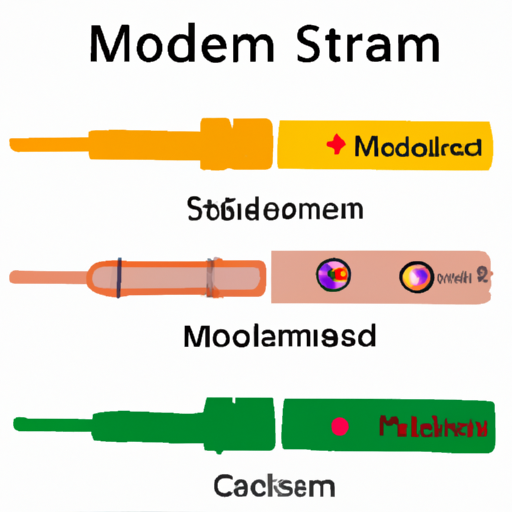
What is the Difference Between Mainstream Capacitors and Manufacturers’ Models and Products?
I. Introduction
Capacitors are fundamental components in electronic circuits, playing a crucial role in storing and releasing electrical energy. They are essential in various applications, from power supply filtering to signal coupling and timing circuits. Understanding the differences between mainstream capacitors and manufacturers’ models is vital for engineers, designers, and hobbyists alike, as it can significantly impact the performance and reliability of electronic devices.
In this blog post, we will explore the characteristics, advantages, and limitations of mainstream capacitors compared to specialized manufacturers’ models. By the end, you will have a clearer understanding of which type of capacitor is best suited for your specific application.
II. Understanding Capacitors
A. Basic Principles of Capacitance
Capacitance is the ability of a component to store electrical charge. It is measured in farads (F), with common subunits being microfarads (µF) and picofarads (pF). A capacitor consists of two conductive plates separated by an insulating material, known as a dielectric. When voltage is applied across the plates, an electric field forms, allowing the capacitor to store energy.
B. Types of Capacitors
There are several types of capacitors, each with unique properties and applications:
1. **Ceramic Capacitors**: Known for their small size and reliability, ceramic capacitors are widely used in high-frequency applications.
2. **Electrolytic Capacitors**: These capacitors offer high capacitance values and are commonly used in power supply circuits.
3. **Film Capacitors**: Made from thin plastic films, these capacitors are known for their stability and low loss, making them suitable for audio applications.
4. **Tantalum Capacitors**: Tantalum capacitors provide high capacitance in a small package and are often used in compact electronic devices.
5. **Supercapacitors**: These capacitors can store large amounts of energy and are used in applications requiring rapid charge and discharge cycles.
C. Applications of Capacitors in Various Industries
Capacitors are utilized across numerous industries, including consumer electronics, automotive, telecommunications, and renewable energy. Their versatility allows them to perform various functions, such as energy storage, signal filtering, and voltage regulation.
III. Mainstream Capacitors
A. Definition and Characteristics
Mainstream capacitors refer to mass-produced components that adhere to standard specifications and ratings. These capacitors are manufactured in large quantities, making them widely available and accessible to consumers and manufacturers alike.
1. **Mass-Produced Components**: Mainstream capacitors are typically produced in factories with automated processes, ensuring consistency in manufacturing.
2. **Standard Specifications and Ratings**: They come with predefined voltage ratings, capacitance values, and tolerances, making them suitable for general applications.
B. Advantages of Mainstream Capacitors
1. **Cost-Effectiveness**: Due to their mass production, mainstream capacitors are generally more affordable than specialized models, making them an attractive option for budget-conscious projects.
2. **Availability and Accessibility**: These capacitors are readily available from various suppliers, ensuring that designers can easily source them for their projects.
3. **Sufficient Performance for General Applications**: For many standard applications, mainstream capacitors provide adequate performance, making them a reliable choice for everyday use.
C. Limitations of Mainstream Capacitors
1. **Variability in Quality**: The mass production process can lead to variability in quality, with some capacitors performing below expectations.
2. **Limited Customization Options**: Mainstream capacitors typically come with fixed specifications, limiting their adaptability for specialized applications.
3. **Potential for Obsolescence**: As technology evolves, certain mainstream capacitor models may become obsolete, making it challenging to find replacements.
IV. Manufacturers’ Models and Products
A. Definition and Characteristics
Manufacturers’ models refer to specialized capacitors designed for specific applications. These components often undergo rigorous testing and quality control to ensure high performance and reliability.
1. **Specialized Components Tailored for Specific Applications**: Manufacturers’ models are engineered to meet the unique requirements of particular industries or applications.
2. **Higher Quality Control and Testing Standards**: These capacitors typically undergo more stringent testing processes, ensuring they meet high-performance standards.
B. Advantages of Manufacturers’ Models
1. **Enhanced Performance and Reliability**: Manufacturers’ models often outperform mainstream capacitors in demanding applications, providing greater reliability and longevity.
2. **Customization Options for Unique Applications**: Many manufacturers offer customization options, allowing designers to specify capacitance values, voltage ratings, and other parameters.
3. **Advanced Technologies and Materials**: Manufacturers’ models may incorporate cutting-edge materials and technologies, resulting in superior performance characteristics.
C. Limitations of Manufacturers’ Models
1. **Higher Cost**: The specialized nature of these capacitors often results in a higher price point compared to mainstream options.
2. **Limited Availability**: Manufacturers’ models may not be as widely available as mainstream capacitors, potentially leading to longer lead times for procurement.
3. **Potential for Longer Lead Times**: Customization and specialized manufacturing processes can result in longer wait times for delivery.
V. Key Differences Between Mainstream Capacitors and Manufacturers’ Models
A. Quality and Performance
Mainstream capacitors may suffice for general applications, but manufacturers’ models often provide superior performance and reliability, especially in critical applications.
B. Cost Considerations
While mainstream capacitors are more cost-effective, manufacturers’ models justify their higher price with enhanced performance and customization options.
C. Customization and Application Specificity
Manufacturers’ models offer tailored solutions for specific applications, whereas mainstream capacitors come with fixed specifications that may not meet unique requirements.
D. Availability and Supply Chain Factors
Mainstream capacitors are readily available, while manufacturers’ models may require longer lead times and may not be as easily sourced.
E. Testing and Certification Standards
Manufacturers’ models typically undergo more rigorous testing and certification processes, ensuring they meet higher quality standards compared to mainstream options.
VI. Choosing the Right Capacitor for Your Application
A. Factors to Consider
When selecting a capacitor, consider the following factors:
1. **Application Requirements**: Assess the specific needs of your project, including voltage, capacitance, and environmental conditions.
2. **Budget Constraints**: Determine your budget and weigh the cost against the performance requirements of your application.
3. **Performance Expectations**: Consider the reliability and longevity needed for your application, especially in critical systems.
B. When to Choose Mainstream Capacitors
Mainstream capacitors are ideal for general applications where cost is a primary concern, and performance requirements are not overly demanding.
C. When to Opt for Manufacturers’ Models
Choose manufacturers’ models for specialized applications that require high performance, reliability, and customization options.
VII. Conclusion
In summary, understanding the differences between mainstream capacitors and manufacturers’ models is essential for making informed decisions in capacitor selection. While mainstream capacitors offer cost-effectiveness and availability, manufacturers’ models provide enhanced performance and customization for specialized applications. By considering your specific needs and constraints, you can choose the right capacitor to ensure the success of your electronic projects.
VIII. References
For further exploration of capacitors and their applications, consider the following resources:
1. "Capacitors: Principles and Applications" by John Smith
2. "The Art of Electronics" by Paul Horowitz and Winfield Hill
3. Industry standards and guidelines from organizations such as the Institute of Electrical and Electronics Engineers (IEEE) and the International Electrotechnical Commission (IEC).
By understanding the nuances of capacitor selection, you can enhance the performance and reliability of your electronic designs.
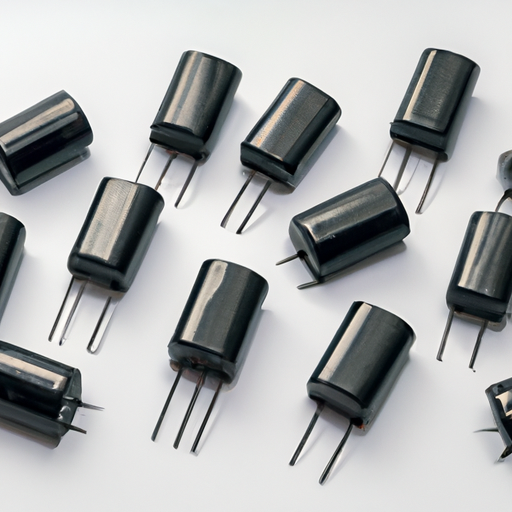
Current Situation of the Capacitor Manufacturer Industry
I. Introduction
Capacitors are essential components in electronic devices, serving as energy storage units that help regulate voltage and current flow. They play a critical role in various applications, from consumer electronics to automotive systems, making them indispensable in modern technology. The capacitor manufacturing industry has evolved significantly over the years, adapting to technological advancements and changing market demands. This article aims to provide an in-depth analysis of the current state of the capacitor manufacturing industry, exploring its historical context, market dynamics, technological innovations, challenges, and future outlook.
II. Historical Context
The history of capacitor technology dates back to the 18th century, with the invention of the Leyden jar, one of the first capacitors. Over the years, capacitor technology has evolved, leading to the development of various types, including ceramic, electrolytic, and film capacitors. The manufacturing processes have also advanced, transitioning from manual assembly to automated production lines, which have significantly increased efficiency and reduced costs. Key milestones in the industry include the introduction of surface-mount technology (SMT) in the 1980s, which revolutionized the way capacitors are integrated into electronic circuits.
III. Market Overview
A. Global Market Size and Growth Trends
As of 2023, the global capacitor market is valued at approximately $25 billion, with projections indicating a compound annual growth rate (CAGR) of around 6% over the next five years. This growth is driven by the increasing demand for capacitors in various sectors, including consumer electronics, automotive, and renewable energy.
B. Key Players in the Industry
The capacitor manufacturing industry is dominated by several key players, including Murata Manufacturing Co., Ltd., Nichicon Corporation, and KEMET Corporation. These companies hold significant market shares due to their extensive product portfolios and strong distribution networks. Additionally, emerging companies and startups are entering the market, focusing on innovative capacitor designs and materials to capture niche segments.
C. Regional Analysis
The capacitor market is geographically diverse, with significant contributions from North America, Europe, and the Asia-Pacific region. North America is home to several leading manufacturers and is a hub for technological innovation. Europe is witnessing steady growth, driven by the automotive and industrial sectors. The Asia-Pacific region, particularly China, is the largest market for capacitors, fueled by the rapid expansion of the electronics industry and increasing investments in renewable energy.
IV. Types of Capacitors
A. Overview of Different Types of Capacitors
Capacitors come in various types, each with unique characteristics and applications:
1. **Ceramic Capacitors**: Known for their small size and reliability, ceramic capacitors are widely used in consumer electronics and telecommunications.
2. **Electrolytic Capacitors**: These capacitors offer high capacitance values and are commonly found in power supply circuits and audio equipment.
3. **Film Capacitors**: With excellent stability and low losses, film capacitors are used in applications requiring high precision, such as audio and video equipment.
4. **Tantalum Capacitors**: Known for their compact size and high capacitance, tantalum capacitors are often used in portable devices and military applications.
5. **Supercapacitors**: These capacitors provide high energy storage and are increasingly used in applications like electric vehicles and renewable energy systems.
B. Applications of Each Type in Various Industries
Capacitors find applications across multiple industries:
Consumer Electronics: Capacitors are integral to smartphones, laptops, and televisions, ensuring stable performance and energy efficiency.
Automotive: In electric vehicles, capacitors are used for energy storage and power management, contributing to improved performance and range.
Industrial: Capacitors play a crucial role in motor drives, power factor correction, and energy storage systems in industrial settings.
Telecommunications: Capacitors are essential in signal processing and power supply circuits, ensuring reliable communication networks.
V. Technological Advancements
A. Innovations in Capacitor Design and Materials
Recent advancements in capacitor technology have focused on improving performance, efficiency, and sustainability. Innovations in materials, such as the use of organic and biodegradable substances, are paving the way for environmentally friendly capacitors. Additionally, advancements in design, such as the development of multilayer capacitors, are enhancing capacitance values while reducing size.
B. Impact of Nanotechnology and Advanced Manufacturing Techniques
Nanotechnology is revolutionizing capacitor manufacturing by enabling the creation of smaller, more efficient components. Advanced manufacturing techniques, such as 3D printing and automated assembly, are streamlining production processes, reducing costs, and improving product quality.
C. Development of Environmentally Friendly Capacitors
As environmental concerns grow, the capacitor industry is increasingly focusing on sustainability. Manufacturers are exploring eco-friendly materials and production methods to minimize their environmental impact. This shift not only addresses regulatory challenges but also meets the growing consumer demand for sustainable products.
VI. Challenges Facing the Industry
A. Supply Chain Disruptions
The capacitor manufacturing industry has faced significant supply chain disruptions, particularly due to global events such as the COVID-19 pandemic and geopolitical tensions. These disruptions have led to delays in production and increased costs, impacting the overall market.
B. Raw Material Shortages
The industry is also grappling with shortages of key raw materials, such as tantalum and aluminum, which are essential for capacitor production. These shortages can lead to increased prices and limited availability of certain capacitor types.
C. Competition from Alternative Technologies
As technology evolves, capacitors face competition from alternative energy storage solutions, such as batteries and supercapacitors. This competition necessitates continuous innovation and adaptation within the industry to maintain market relevance.
D. Regulatory Challenges and Environmental Concerns
Regulatory challenges related to environmental sustainability are becoming increasingly stringent. Manufacturers must navigate complex regulations while ensuring compliance with environmental standards, which can add to operational costs.
VII. Opportunities for Growth
A. Increasing Demand for Capacitors in Emerging Technologies
The demand for capacitors is expected to rise significantly in emerging technologies, such as electric vehicles, renewable energy systems, and the Internet of Things (IoT). These sectors require advanced capacitors for energy storage, power management, and signal processing, presenting lucrative opportunities for manufacturers.
B. Expansion into New Markets
As global markets continue to evolve, capacitor manufacturers have the opportunity to expand into new regions, particularly in developing economies where electronic consumption is on the rise. This expansion can lead to increased sales and market share.
C. Strategic Partnerships and Collaborations
Collaborations between manufacturers, technology companies, and research institutions can drive innovation and accelerate the development of new capacitor technologies. Strategic partnerships can also enhance supply chain resilience and improve market positioning.
VIII. Future Outlook
A. Predictions for the Capacitor Manufacturing Industry
The capacitor manufacturing industry is poised for steady growth in the coming years, driven by technological advancements and increasing demand across various sectors. The market is expected to adapt to changing consumer preferences and regulatory requirements, leading to the development of more efficient and sustainable products.
B. Potential Shifts in Market Dynamics
As the industry evolves, we may see shifts in market dynamics, with emerging players gaining traction and established manufacturers adapting to new technologies. The focus on sustainability and environmental responsibility will likely shape future product offerings and business strategies.
C. Long-Term Sustainability and Environmental Considerations
Long-term sustainability will be a key consideration for the capacitor manufacturing industry. Manufacturers will need to prioritize eco-friendly practices, from sourcing raw materials to production processes, to meet regulatory requirements and consumer expectations.
IX. Conclusion
In summary, the capacitor manufacturing industry is at a pivotal point, characterized by significant growth opportunities and challenges. As technology continues to advance and consumer demands evolve, manufacturers must remain agile and innovative to thrive in this competitive landscape. Stakeholders in the industry should focus on sustainability, strategic partnerships, and market expansion to ensure long-term success.
X. References
A comprehensive list of sources and further reading materials would typically follow this section, providing readers with additional insights and information on the capacitor manufacturing industry.
---
This blog post provides a detailed overview of the current situation of the capacitor manufacturing industry, covering its historical context, market dynamics, technological advancements, challenges, and future outlook. Each section is designed to inform and engage readers, offering a comprehensive understanding of this vital industry.


















